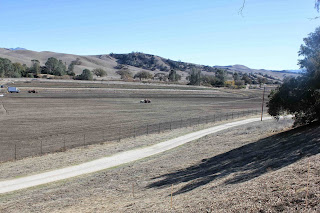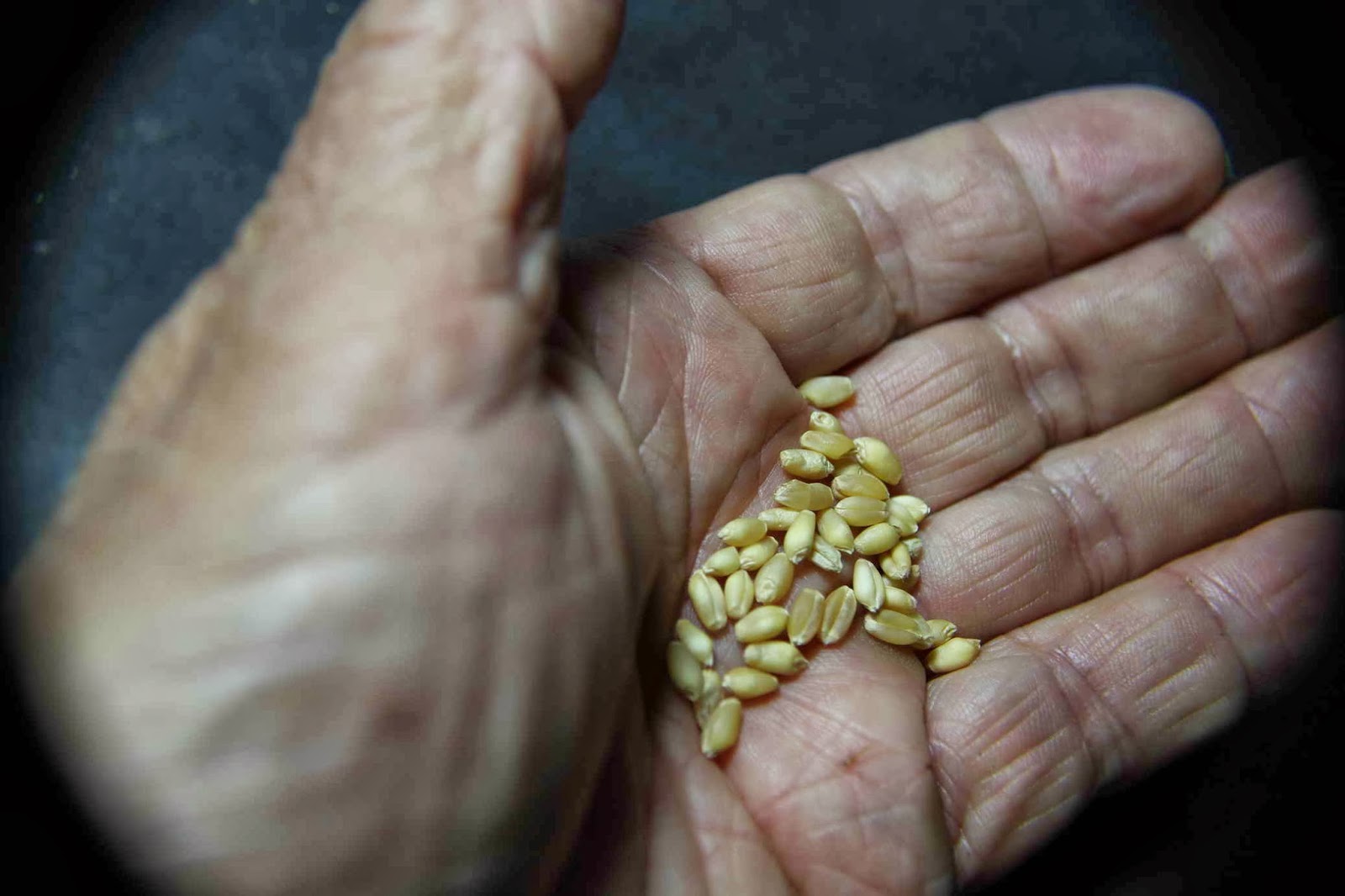 It can be hard work and long
days, but they have good things to say about the experience.
It can be hard work and long
days, but they have good things to say about the experience. 
Our Tehachapi-area grower, Jon Hammond, writes:
“My family bought an orchard and created a small subsistence farm in the Tehachapi Mountains in 1921, growing vegetables and fruits and selling eggs, chickens, sheep and pigs to people in the area and I was raised there -- and bought my first car with money I raised selling pickling cucumbers and pumpkins.”
In northern Kern County, Nate Siemens hopes to grow both modern and landrace wheat, following in the grain-growing footsteps of several generations. He talks about what it means to provide fresh produce directly to those who will prepare and eat it.
The farmers tell us, when you grow quality food and deliver directly
to the customers, it is no longer the food industry or the produce business, it
is more like the society of food … the family of food.
Tom Shepherd, growing Red Fife and Glenn in the Santa Ynez valley, tells what it means to build trust.
Tom Shepherd, growing Red Fife and Glenn in the Santa Ynez valley, tells what it means to build trust.
The exciting fact is that high
quality wheat is being grown in our region as it was many years ago.


And our families and our bakers will be able once again to enjoy fresh flour with the nutrition, flavor, and baking quality that can only come from wheat that is locally grown, locally milled, and locally baked.
Everyone in LABB – and every bread baker in our region – can help spread the word that real wheat can once again be available in our communities – and this will include ancient and heritage grains – all sustainably grown on local farms and stone-ground fresh by neighborhood mills.
 |
| Weiser Family Farm Stand |
 |
| Alex Weiser |
You can learn a lot, hear about the trials and surprises of farming, see pictures of his kids. And his goats.
And finally – and maybe most important – you’ll enjoy a special level of trust.




















